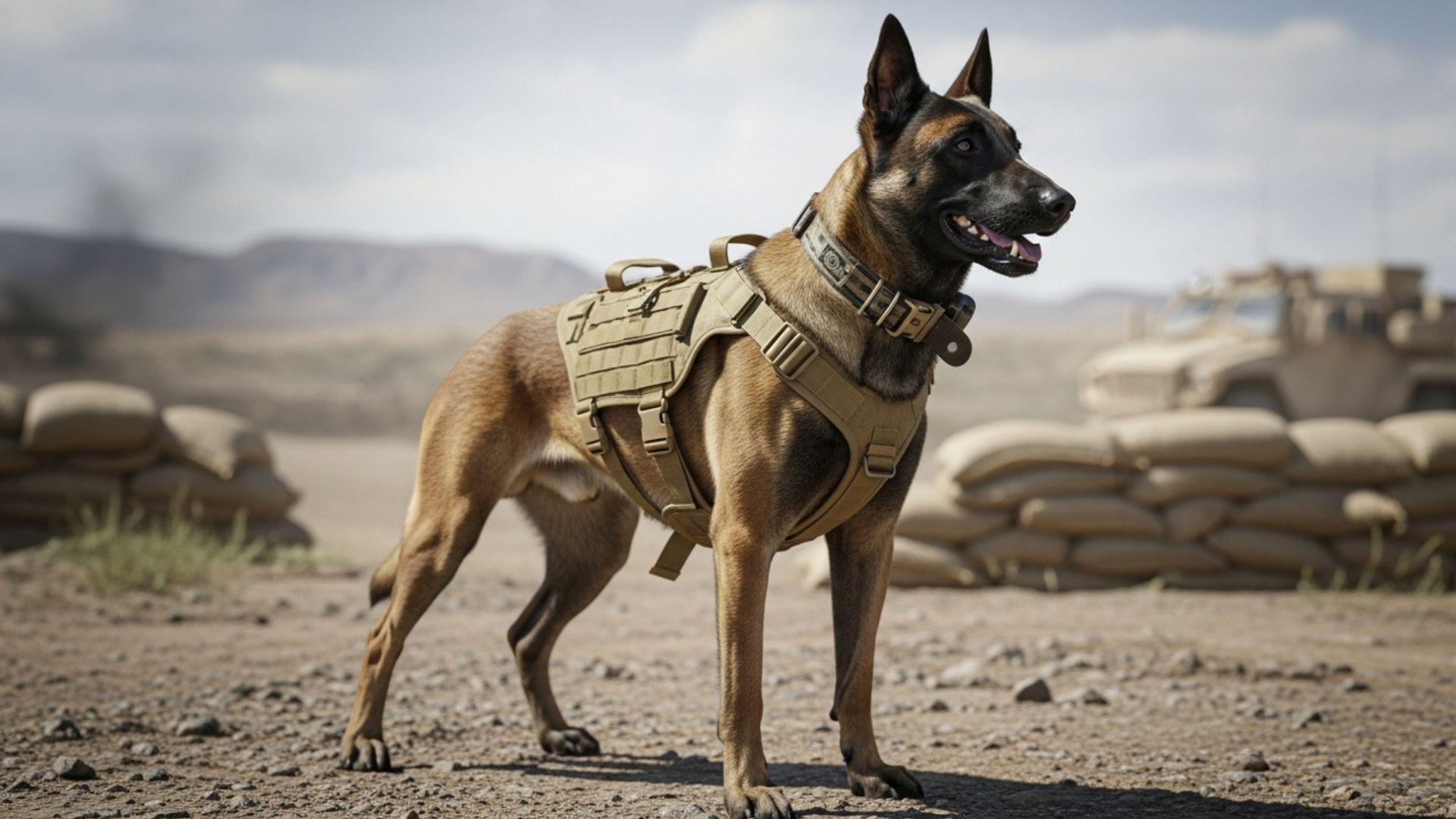War dogs have been a crucial part of military operations for centuries, serving alongside soldiers in combat zones. These loyal companions are not just pets; they are highly trained military working dogs capable of performing various tasks, including detection, protection, and search and rescue.
Several dog breeds, known for their intelligence, agility, and strong work ethic, have earned their place in military history.
From detecting explosives to protecting troops, these military dogs showcase extraordinary abilities that make them invaluable to military forces. While certain breeds are more commonly associated with war dogs, others have quietly served with distinction in specialized roles.
Whether for their keen sense of smell, alertness, or protective instincts, military dog breeds continue to prove their worth in modern military operations.
These brave and skilled military dog breeds have played crucial roles in military operations, offering loyalty and expertise in combat.
Popular War Dog Breeds Used In Military Operations
1. Belgian Malinois
A History of Herding and Heroism
Originally bred in Belgium near the city of Malines, the Belgian Malinois’ primary role was herding livestock, as per WebMD. Over time, their sharp intelligence, work ethic, and versatility made them ideal military dogs for law enforcement and military operations.
Low-Maintenance Coat, High-Energy Work
The Belgian Malinois has a short, waterproof coat that requires minimal grooming compared to other working breeds. Their seasonal shedding twice a year, known as the “blowout,” means occasional extra care during these periods.
With a high energy level, they thrive on daily intense activities like running and agility training.
Training & Tactical Excellence
When it comes to training, the Belgian Malinois is a military dog that excels. Known for its intelligence, they are quick to learn and even quicker to execute commands.
Due to their drive and focus, these dogs are often paired with military personnel for specialized missions, showing remarkable skill in both combat and rescue situations.
Military Operations: A Soldier in a Fur Coat
In the military, the Belgian Malinois is often deployed for high-intensity tasks like locating explosives or apprehending suspects.
Their unmatched agility and sharp instinct make them perfect for situations that demand quick responses, from detecting hidden explosives to tracking insurgents through tough terrain.
2. German Shepherd
Roots of a Working Class Hero
Originally bred in Germany for herding sheep as a herding dog, the German Shepherd’s lineage is rooted in utility and endurance.
In the late 19th century, Captain Max von Stephanitz meticulously selected and bred dogs that displayed both intelligence and stamina, resulting in the well-rounded, highly trainable German Shepherd, according to Britannica.
Dedicated to Duty: Training and Specialization
German Shepherds are prized for their ability to learn and perform complex tasks. With their keen senses and immense drive, they are often deployed in military operations, excelling in roles such as detection, tracking, and search and rescue.
A Well-Groomed Defender
While their dense coat offers protection, it also requires regular grooming. A few times a week of brushing is essential to prevent matting and reduce shedding.
Given their size and coat, bath times may be a team effort. Their powerful build, designed for physical endurance, demands a healthy lifestyle, requiring at least two hours of daily exercise to maintain peak performance.
The Loyal Soldier’s Best Friend
German Shepherds aren’t just protectors; they’re also excellent companions. In military settings, their bond with handlers is strong, making them trustworthy partners.
Their instinct to guard and protect shines through, and with proper socialization, they form balanced relationships with both people and other animals.
3. Labrador Retriever
From Fishermen to Frontlines: A Legacy of Service
Originally bred for retrieving waterfowl, the Labrador Retriever’s love for water and natural retrieving instincts made them ideal companions for fishermen in early Canada and England, as per Hill’s Pet.
Their history of working alongside humans has extended far beyond hunting to include military operations, where their keen noses and agility have been used.
Training the Friendly Workhorse
Labradors are quick learners with an eagerness to please, making them prime candidates for specialized training. Their ability to stay calm under pressure and their love for working with people make them invaluable in high-stakes environments like disaster zones and military bases.
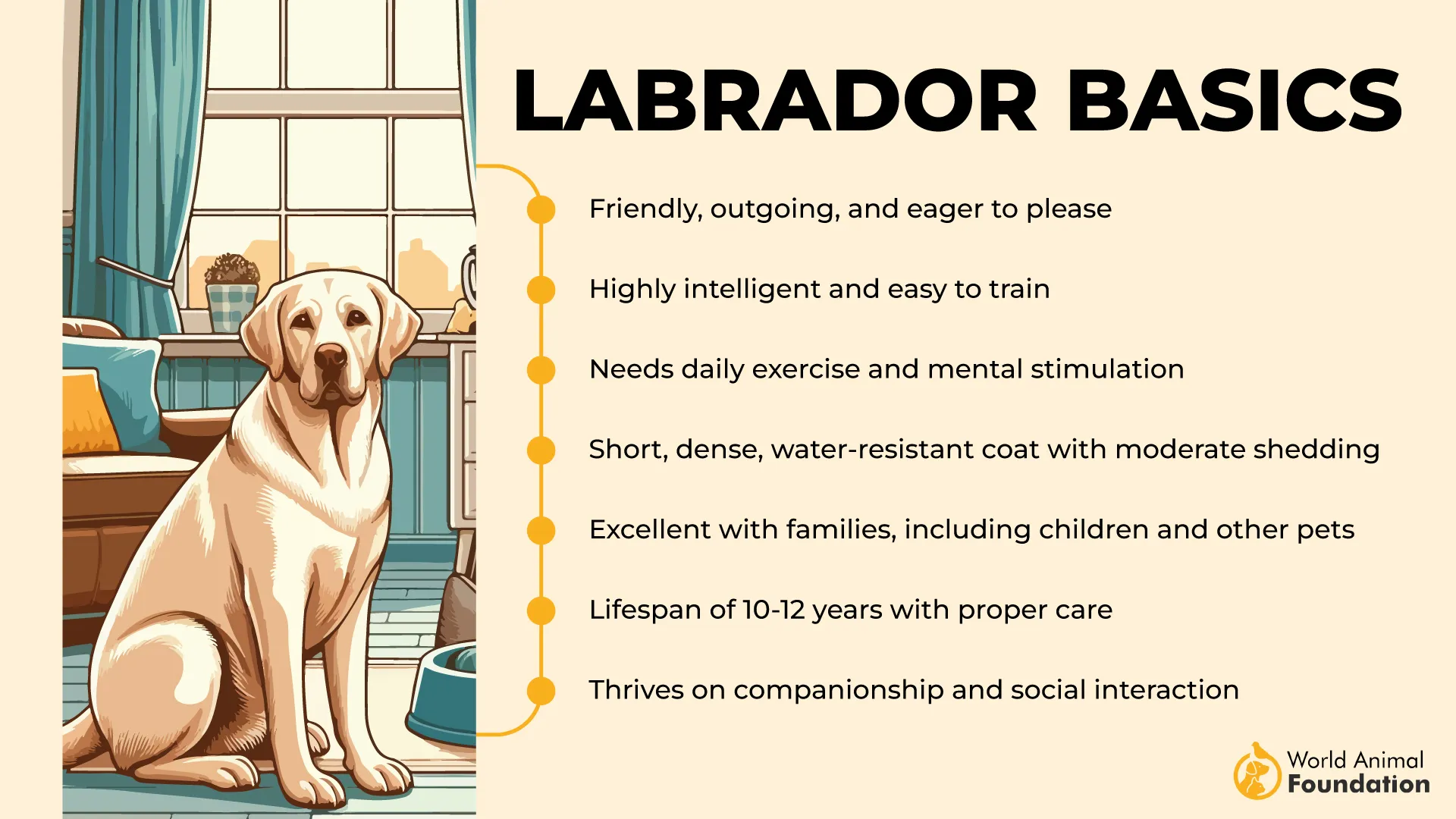
A Coat Built for the Outdoors
Labrador Retrievers are famous for their water-resistant double coat, a feature that allows them to thrive in both wet and dry conditions. However, this coat requires regular maintenance, including frequent brushing to manage shedding and keep their skin healthy.
Military and Beyond: The Labrador’s Loyalty
Known for their excellent temperament, Labradors are not just family dogs but also loyal military dogs. Their participation in military operations has ranged from sniffing out explosives to assisting with search and rescue missions in war zones.
4. Dutch Shepherd
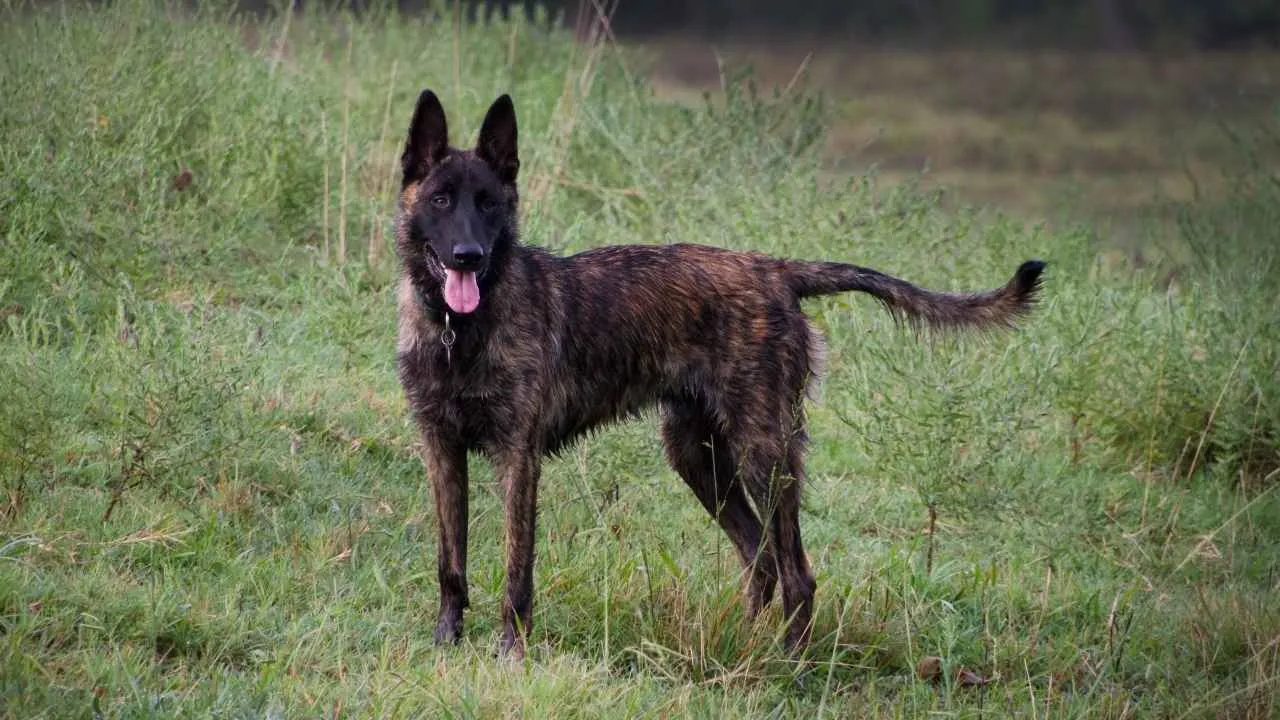
From Farm Fields to Frontlines: A History of Versatility
The Dutch Shepherd’s roots stretch back to the 18th century, where it was bred to assist shepherds and farmers in rural Netherlands.
Today, this agile and smart dog excels as a military dog and in police roles, particularly in search and rescue missions and tracking, thanks to its keen senses and remarkable work ethic.
Training the Driven Worker
Dutch Shepherds are highly trainable, thriving in environments that challenge both their minds and bodies. With consistent, positive reinforcement, they can master complex tasks, but their independent streak means early socialization and firm training are essential for maintaining focus and discipline.
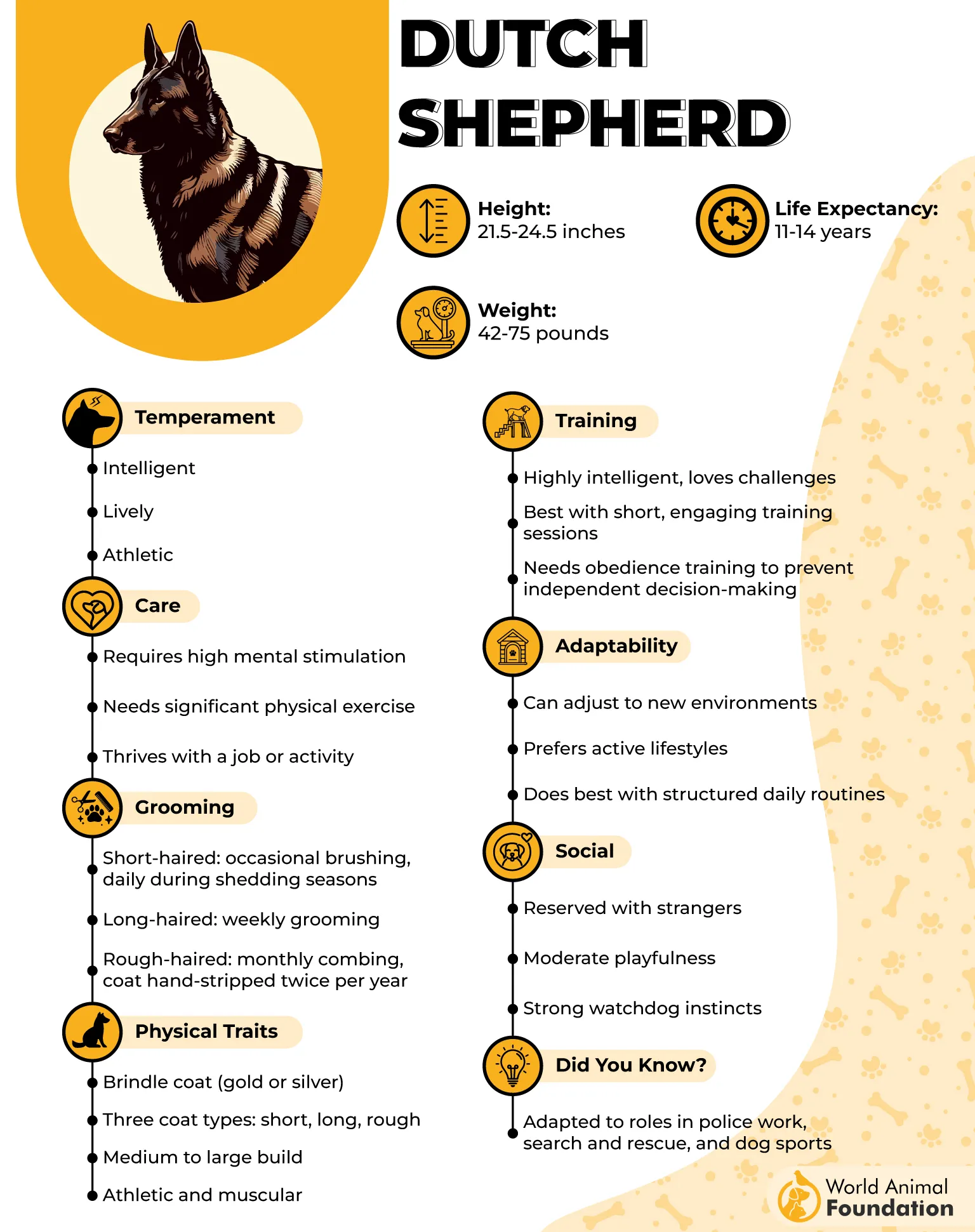
A Coat Built for the Elements
The Dutch Shepherd’s dense, weather-resistant coat reflects its working-class heritage, designed to handle tough outdoor conditions. Though they shed moderately throughout the year, especially during seasonal changes, their grooming needs are fairly low-maintenance.
A weekly brushing session, along with regular care for their ears and teeth, ensures they stay in top condition for their high-energy roles.
Loyal and Alert: A True Working Dog
Known for their loyalty and protective nature, Dutch Shepherds make excellent family pets and vigilant working, military dogs. Their alertness, combined with their herding instinct, means they’re quick to bark at unfamiliar faces, making them excellent guard dogs.
5. Doberman Pinscher
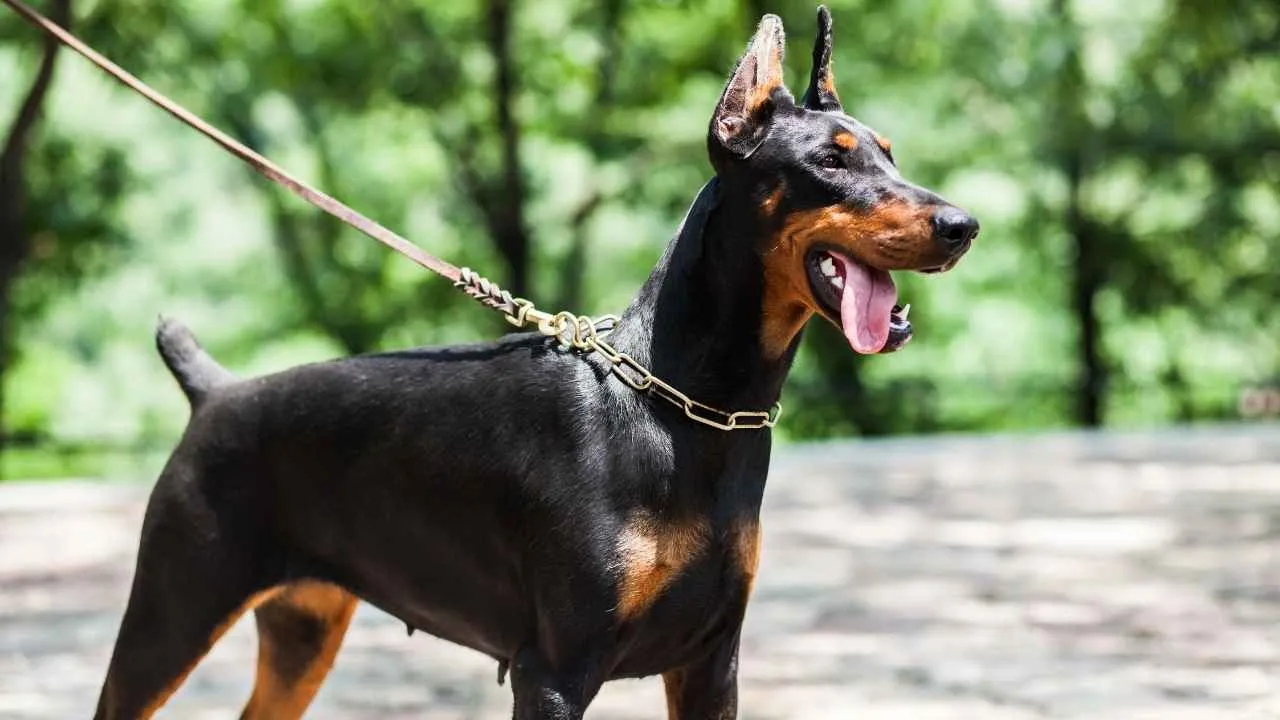
From Tax Collector to Military Hero
The Doberman Pinscher was created in the late 19th century by Louis Dobermann, a tax collector in Germany, who needed a loyal dog to accompany him on his dangerous rounds.
Today, Dobermans are commonly used as military dogs and for police work, excelling in roles such as scouting, message delivery, and guarding sensitive areas.
Sharp Training for a Sharp Mind
Known for their intelligence, Dobermans are quick learners who thrive on tasks that challenge their mental and physical capabilities.
Their loyalty and responsiveness to commands make them a favorite military dog for specialized military and police roles, but careful training from an early age is crucial to harnessing their potential effectively, as per Purina.
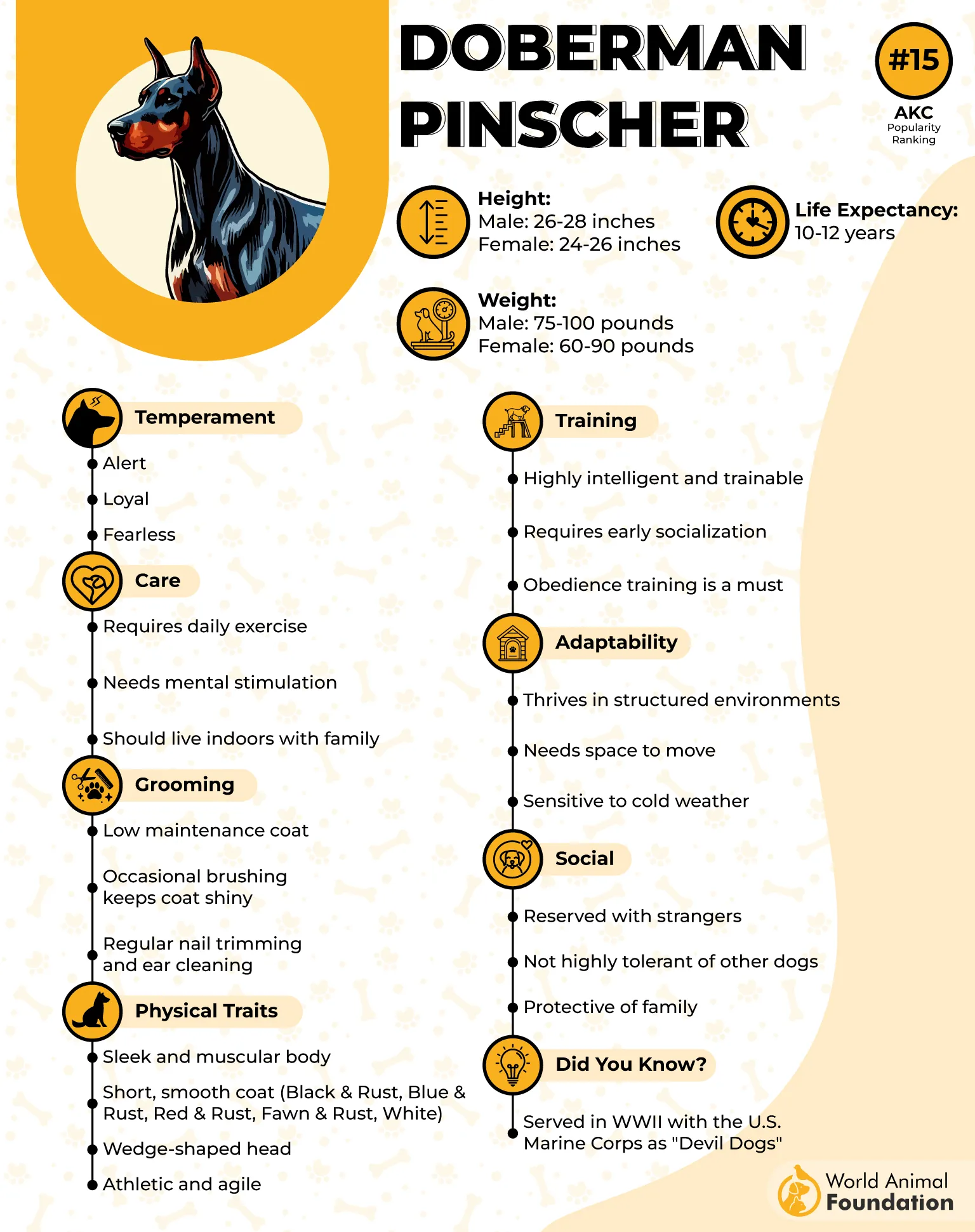
Sleek Coat, Minimal Grooming
The Doberman’s short, sleek coat is not only striking but practical. With colors ranging from black and tan to blue and fawn, their coat is easy to maintain, requiring only weekly brushing to manage shedding.
Despite their minimal grooming needs, Dobermans do require attention to their health, particularly regarding breed-specific issues like heart disease and joint problems.
Loyal and Protective: The Ultimate Family Defender
While Dobermans are naturally wary of strangers, they are incredibly loyal to their families. Their protective instincts make them excellent guard dogs, but they can also be affectionate and gentle with loved ones.
In military settings, their ability to assess threats and act quickly has made them indispensable.
6. Boxer
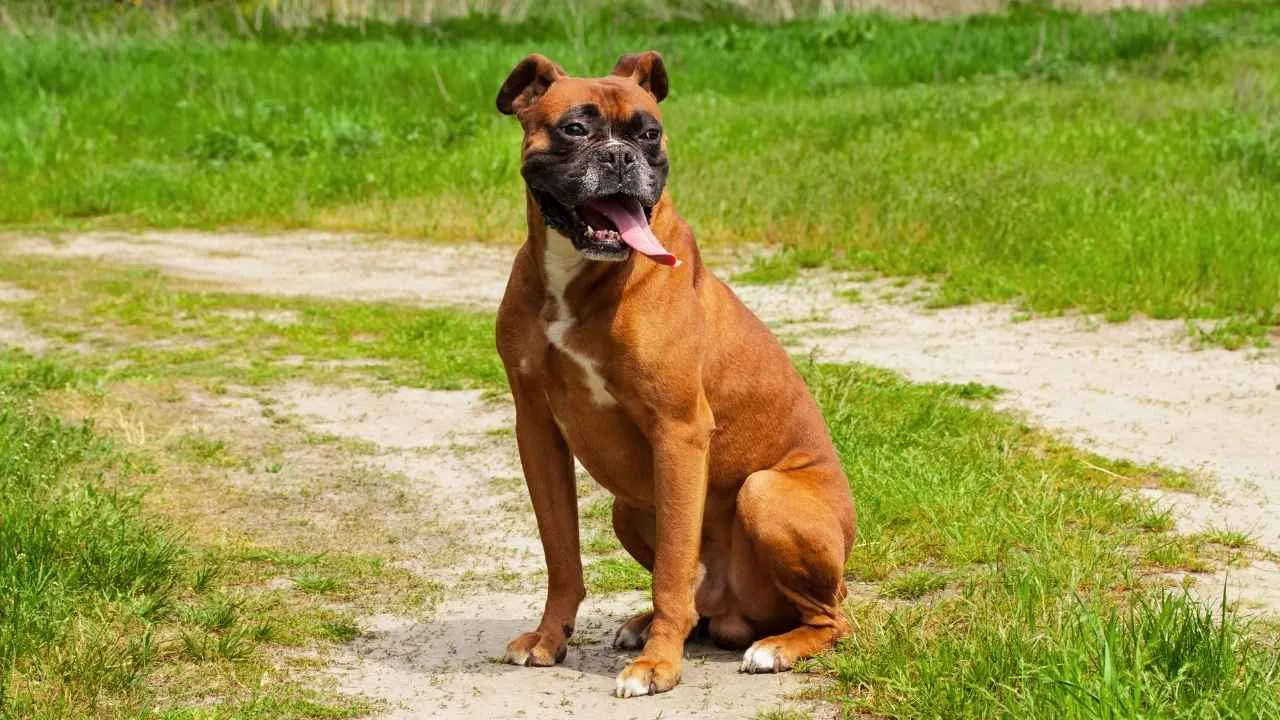
Historical Roots in Protection and Hunting
Originally imported to the United States from Germany in the 1930s, Boxers were bred as a hunting dog, where they honed their natural protective instincts.
Their courageous and loyal nature made them a staple in military operations, especially in the Second World War, where they were used as messenger and sentry dogs, helping soldiers by alerting them of enemy presence.
Training for Tactical Precision
Their energetic and playful nature makes them excellent candidates for military training, where they excel in tasks like tracking and search-and-rescue missions.
With consistent, positive reinforcement, Boxers can be taught to perform complex military tasks with agility and precision, earning their reputation as reliable working dogs.
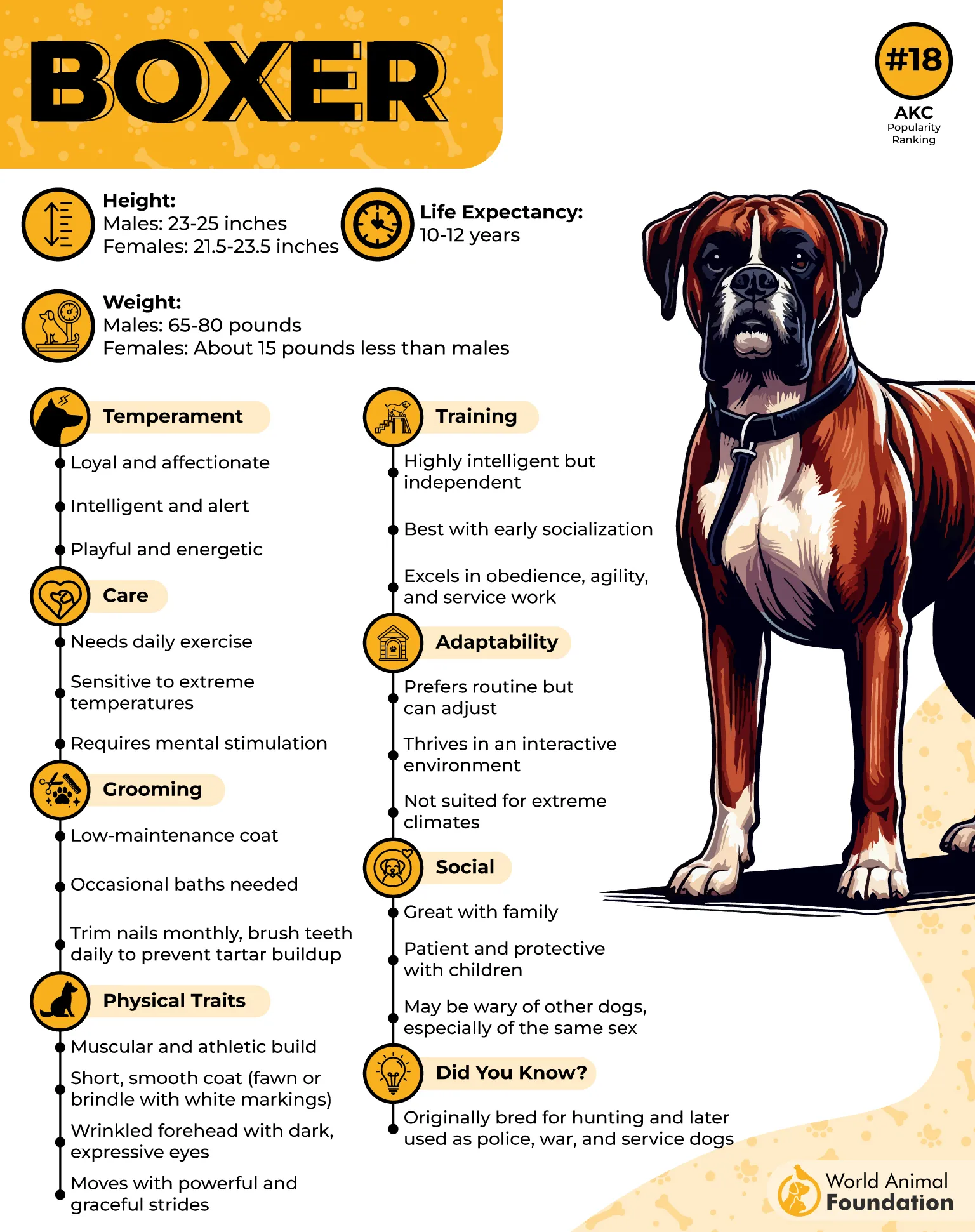
Low Maintenance, High Energy
Boxers have a short, smooth coat that requires minimal grooming, but their active lifestyle demands significant physical activity. In military settings, Boxers were often required to navigate through rough terrains, making their athletic, well-muscled bodies ideal for the job.
A Natural Instinct for Guarding
With their innate guarding instincts, Boxers were commonly used as sentry dogs during military operations, particularly in World War II.
While highly social and affectionate with their handlers, they can be wary of strangers, making them exceptional at protecting both military units and valuable equipment in the field.
7. Alaskan Malamute
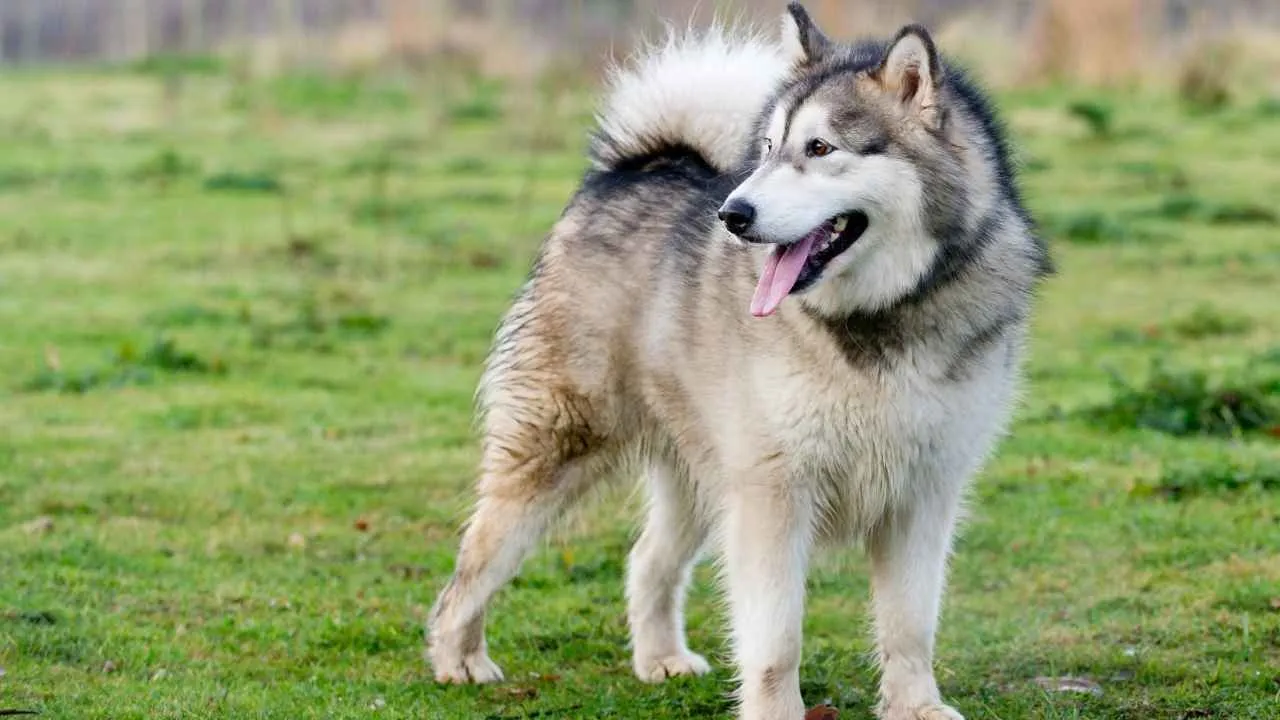
A History Forged in the Cold
The Alaskan Malamute was originally bred by the Mahlemiut Inuit tribe of Northwestern Alaska. These formidable dogs were essential for survival in harsh arctic conditions, pulling heavy sleds and assisting in the hunting of seals, as per the AKC.
Training for Endurance and Discipline
Alaskan Malamutes are incredibly intelligent, but their independent streak means they require firm training. With the right approach, they can become reliable partners in various operations, from search-and-rescue missions to hauling loads over extreme distances.
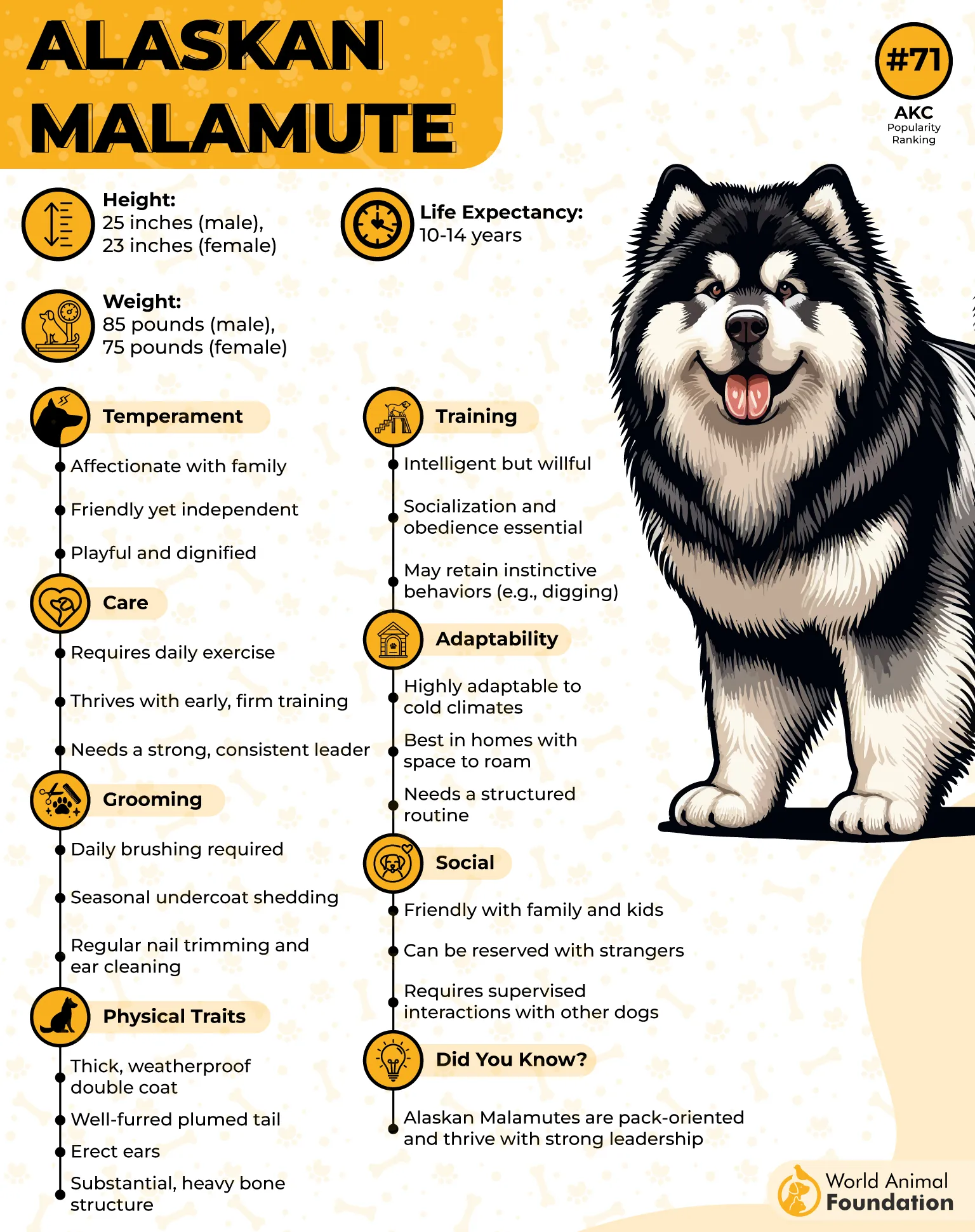
Grooming for Harsh Conditions
The Malamute’s thick double coat is a key feature for surviving the extreme cold, but it also means they require significant grooming, especially during shedding seasons.
Their heavy coats were an asset during World War II, where they survived frigid temperatures while pulling sleds for military supply runs, showcasing their resilience in unforgiving environments.
An Intuitive and Protective Nature
Malamutes may be reserved with strangers, but they are deeply loyal and protective of their families. This guarding instinct, combined with their strength, made them excellent sentry dogs during military operations.
Their natural ability to remain calm in stressful conditions was invaluable in wartime settings, where their silence and power were put to the test in remote camps and expeditions.
Conclusion
These military dogs excel at explosive detection, search and rescue missions, and guard duties, playing key roles in combat zones and helping wounded soldiers.
Whether it’s messenger dogs or police dogs, their keen senses and courageous nature make them essential in military tasks, from patrol duties to bomb detection.
In military units like the Navy SEALs and Marine Corps, dogs with specialized training, such as the Belgian Malinois that helped kill Osama bin Laden, perform physically demanding tasks in extreme conditions.
These military dogs are bred for their protective instincts, fierce loyalty, and tireless work ethic, forming strong bonds with their human counterparts.
As military dogs continue to serve, their history is forever etched in military history.
With the proper training and strong bonds with their military handlers, these military dogs remain vital to military operations, proving they are not just excellent companions but also true heroes in demanding environments.


